
The year 2024 saw numerous major airports worldwide rebound sharply following pandemic disruptions. Among these, ten key hubs handled between 50 and 60 million passengers, balancing scale with strong operational performance.
In this article, we feature those airports, including the 2024 traffic figures, and highlight the major airlines that define their global connectivity.
Best Airports in the World: 50 to 60 Million Passengers
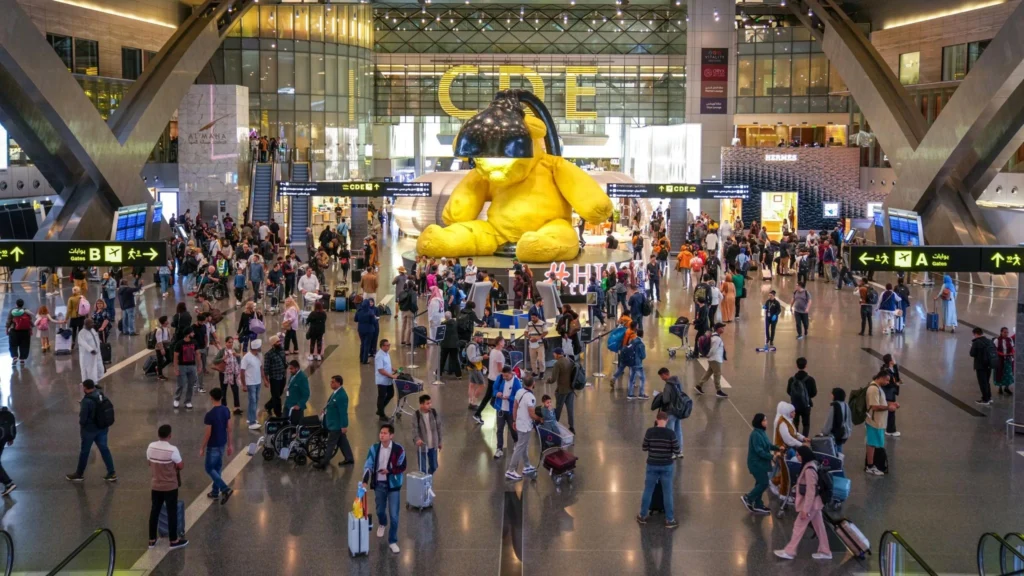 Photo: Hamad International Airport
Photo: Hamad International Airport1. Hamad International Airport (DOH)
In 2024, Hamad International Airport (DOH) handled an impressive 52.7 M passengers, up 15 % from the previous year.
As the flagship base of Qatar Airways, DOH sits at the heart of one of the world’s most expansive global networks. Qatar Airways offers nonstop routes to every continent except Antarctica.
In addition to Qatar’s flag carrier, the airport hosts regional players like Gulf Air and Oman Air, as well as long-haul operators like British Airways, Lufthansa, Singapore Airlines, and China Southern Airlines. A growing segment of low-cost operators, such as Wizz Air, provides point-to-point flights to Europe.
DOH’s remarkable traffic stems not just from transfer passengers, but local traffic grew 16 % in 2024 at Hamad International Airport. This surge is thanks to Doha’s expanding tourism appeal and Qatar Airways’ ambitious route strategy.
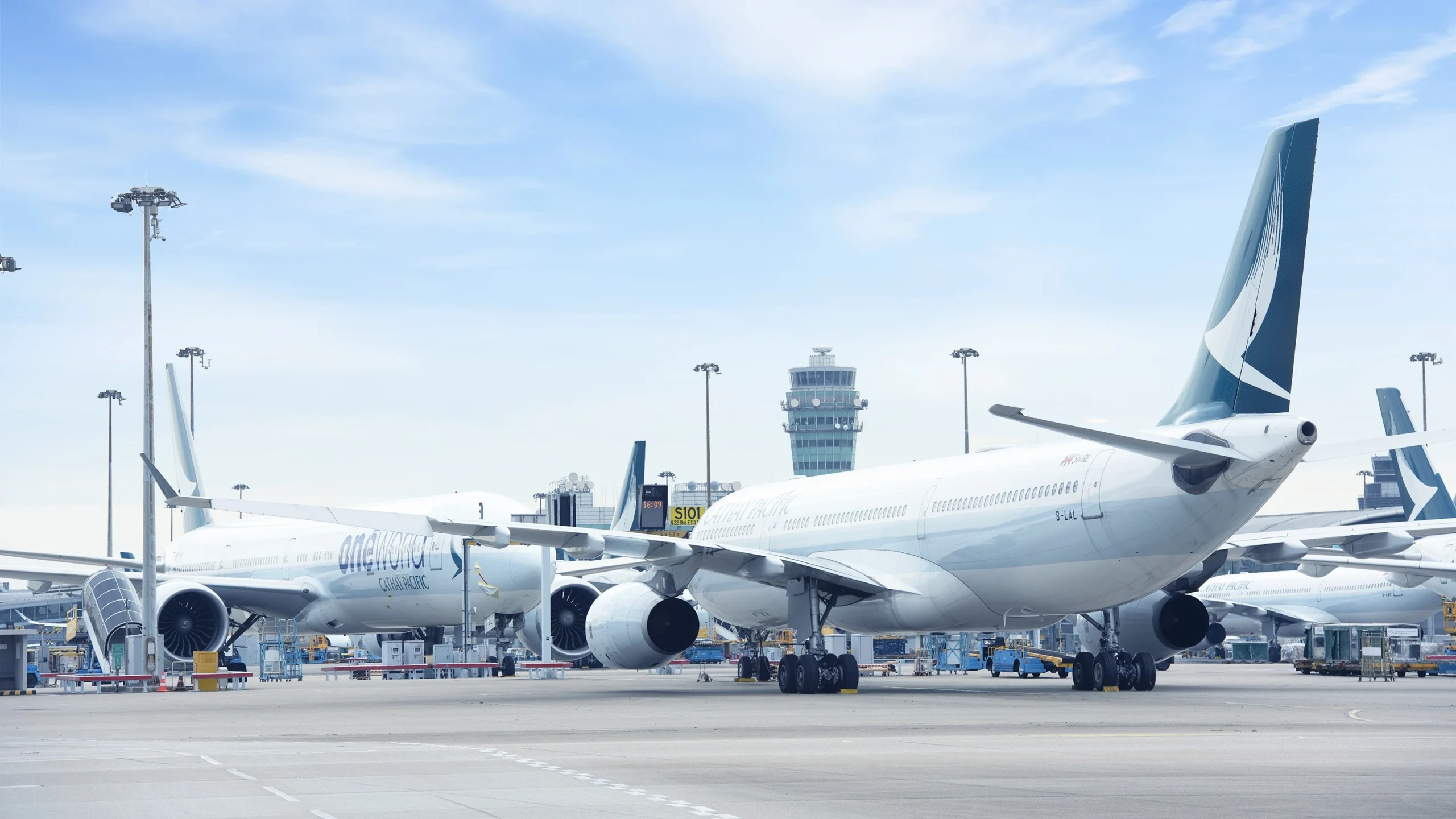 Photo: Hong Kong International Airport
Photo: Hong Kong International Airport2. Hong Kong International Airport (HKG)
Hong Kong International Airport (HKG) managed 54.9 M passengers during the fiscal year ending March 2025, representing a 21.6 % increase. The calendar‐year figure for 2024 was 53.1 M, a 34.3 % rise year‑on‑year.
HKG serves as the principal base for Cathay Pacific, Hong Kong Airlines, and the budget carrier HK Express. Additionally, mainland Chinese airlines like Air China, China Eastern, and China Southern operate frequent flights. Long-haul connectivity is ensured by Emirates, Qatar Airways, British Airways, Lufthansa, and Air France.
As one of Asia’s busiest gateways, HKG’s blend of strong local demand and international connectivity positions it firmly among 2025’s top performers.
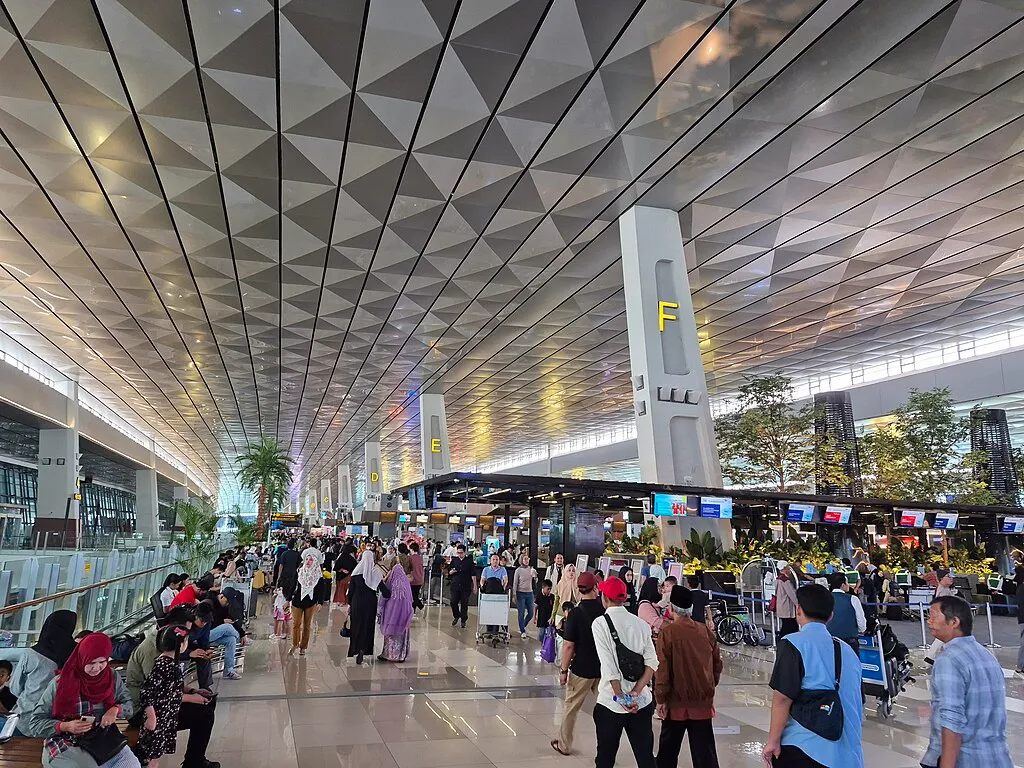 Check In Terminal 3; Photo- Wikipedia
Check In Terminal 3; Photo- Wikipedia3. Soekarno‑Hatta International Airport (CGK)
Jakarta’s hub, Soekarno‑Hatta International Airport (CGK), handled around 37.8 M domestic passengers in 2024, representing about 29 % of Indonesia’s total domestic traffic. Including international figures, total traffic exceeded 50 million, positioning CGK comfortably within this bracket.
As Indonesia’s primary aviation gateway, CGK is led by Garuda Indonesia and low-cost giants Lion Air, Batik Air, and Citilink. International carriers, including Singapore Airlines, Thai Airways, Malaysia Airlines, and regional budget airlines like AirAsia Indonesia, also bridge CGK with ASEAN and Middle Eastern destinations.
With strong domestic volume and growing international focus, Soekarno‑Hatta continues to serve as the country’s principal aviation artery.
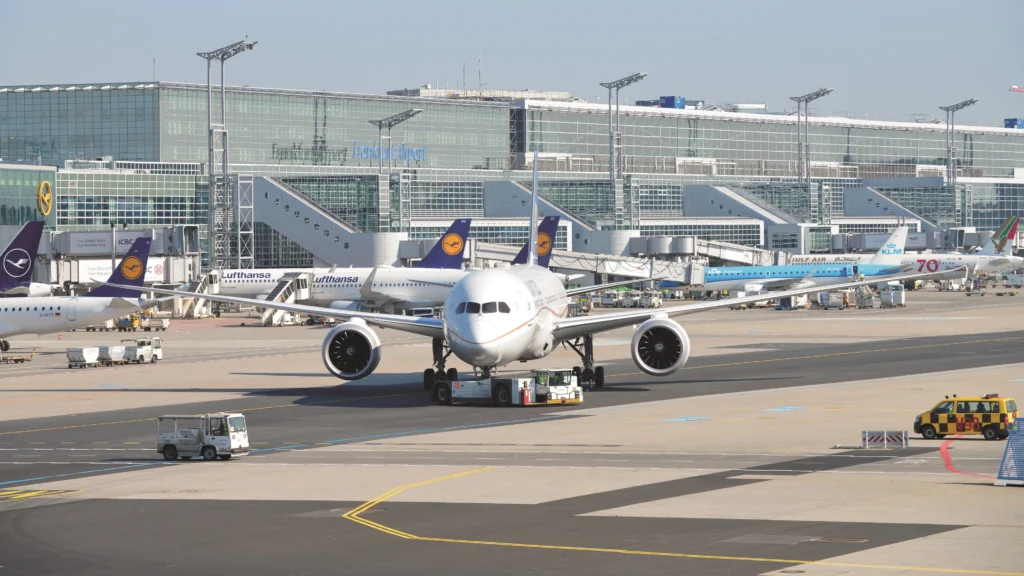 Photo: Frankfurt Airport
Photo: Frankfurt Airport4. Frankfurt Airport (FRA)
Europe’s connectivity powerhouse, Frankfurt Airport (FRA), served 61.5 M passengers in 2024 -an increase of 3.7 % over 2023.
Frankfurt is the main hub for Lufthansa and its Star Alliance partners, including Austrian, Swiss, Scandinavian, and Brussels Airlines. In addition, long-haul carriers such as United Airlines, American Airlines, Air Canada, Emirates, and Qatar Airways maintain busy operations. The airport hosts around 99 airlines serving 311 destinations.
FRA’s strength lies in its global connectivity, ranking among the most connected hubs worldwide.
 Photo: Port of Seattle
Photo: Port of Seattle5. Seattle–Tacoma International Airport (SEA)
In 2024, Seattle–Tacoma International Airport (SEA) recorded a milestone 52.64 M passengers— the highest on its decades-long record.
Alaska Airlines and Delta Air Lines serve as the primary carriers at SEA, with Alaska dominating domestic markets and Delta anchoring transpacific and international flights. Other U.S. carriers like American, United, and Southwest also maintain strong schedules.
The airport’s rise is underpinned by Seattle’s booming economy, tech-industry growth, and SEA’s evolution into a key transpacific nexus.
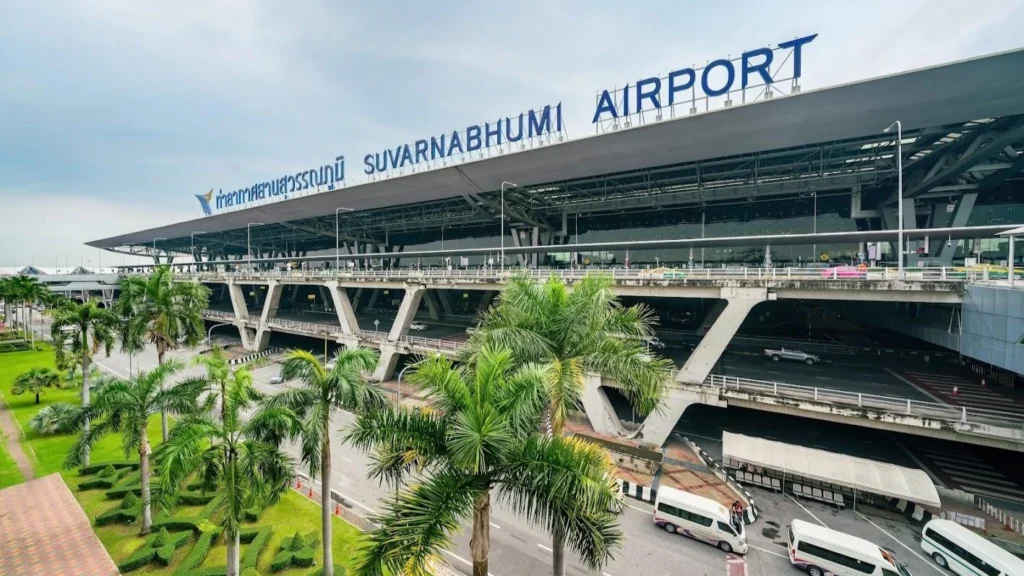 Bangkok Suvarnabhumi International Airport | Photo: VietJet Air
Bangkok Suvarnabhumi International Airport | Photo: VietJet Air6. Suvarnabhumi Airport (BKK)
Thailand’s primary international hub, Suvarnabhumi Airport (BKK), handled 62.23 M passengers in 2024
Mainline Thai carriers like Thai Airways International and Bangkok Airways dominate BKK, supported by low-cost operators such as Thai AirAsia, Thai VietJet Air, and Nok Air. International traffic sees regular service by Emirates, Cathay Pacific, Singapore Airlines, Qatar Airways, China Eastern, and Japan Airlines.
Surpassing 60 million passengers places BKK among Asia’s fastest recovering hubs, thanks to a strong tourism rebound and expanded regional connectivity.
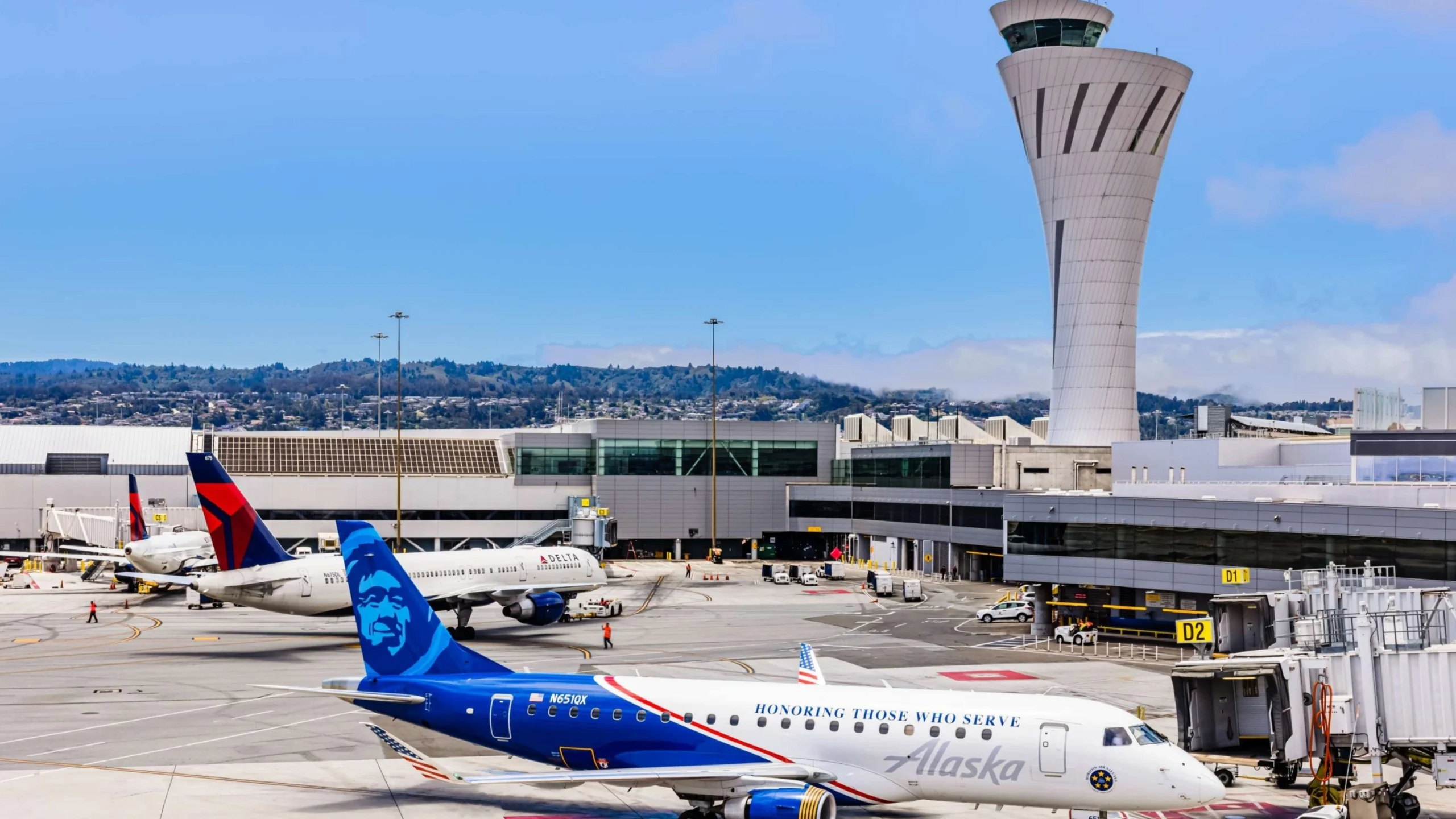 Photo: San Francisco International SFO Airport
Photo: San Francisco International SFO Airport7. San Francisco International Airport (SFO)
In fiscal year 2024, San Francisco International Airport (SFO) welcomed approximately 51.3 M passengers, a 9 % increase over 2023.
SFO serves as a key trans-Pacific gateway. U.S. airlines United, American, Delta, and Alaska operate extensive international and domestic routings. The Tom Bradley Federal Terminal houses major foreign carriers, including ANA, JAL, Cathay Pacific, Lufthansa, British Airways, and Air France.
SFO’s resurgence reflects both U.S. domestic demand and reviving leisure/business travel to Asia and Europe.
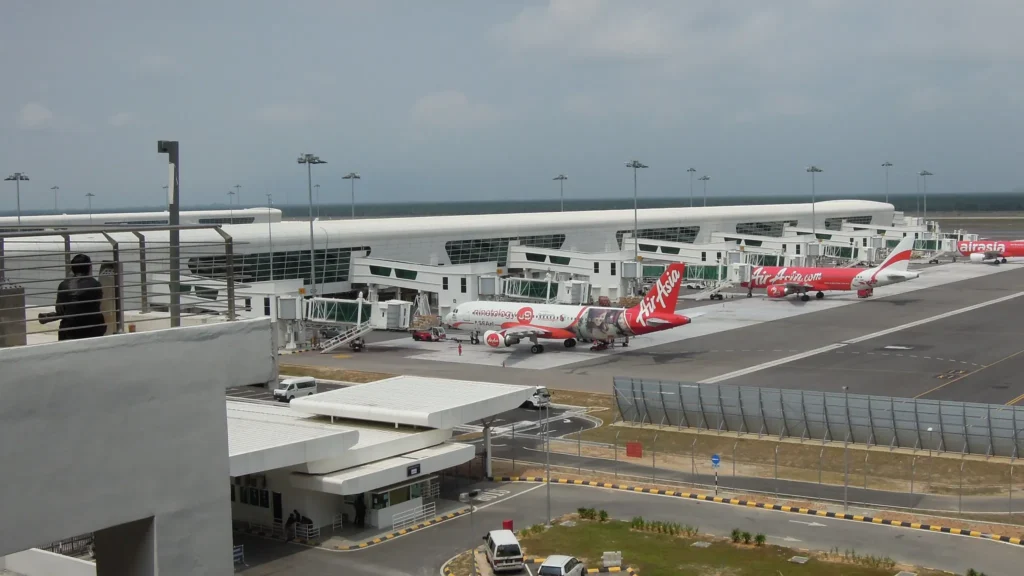 KLIA T2; Photo- David McKelvey | Flickr
KLIA T2; Photo- David McKelvey | Flickr8. Kuala Lumpur International Airport (KUL)
Malaysia’s flagship gateway, Kuala Lumpur International Airport (KUL), handled 57.1 M passengers in 2024, which represents a 21 % increase from 2023.
KUL is a hub for Malaysia Airlines, AirAsia, Malaysia Airlines’ low-cost sibling Firefly, Malindo Air, and Batık Air Malaysia. International airlines, including Emirates, Qatar, Singapore Airlines, Thai Airways, and Cathay Pacific, further expand their network.
Its balanced domestic–international mix and strategic location help position KUL as Southeast Asia’s top-performing airport.
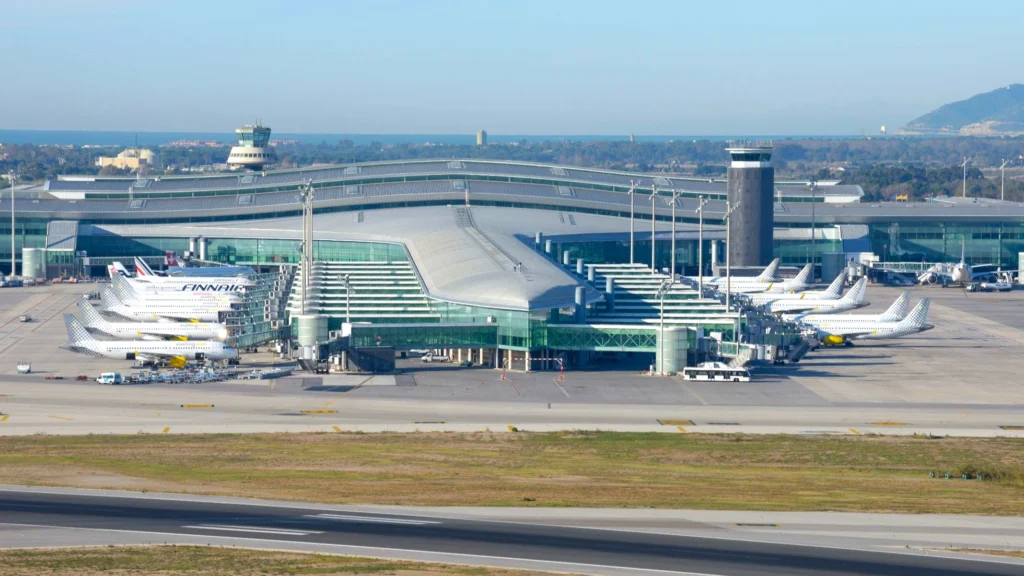 Photo: LOT Polish Airlines
Photo: LOT Polish Airlines9. Barcelona–El Prat Airport (BCN)
Barcelona’s gateway, Barcelona–El Prat Airport (BCN), processed 50.9 M passengers by November 2024, a 10.7 % increase year‑on‑year. Full‑year traffic reportedly crossed 52 million.
Vueling and Iberia lead domestic and European traffic. Barcelona also hosts Ryanair, easyJet, Wizz Air, Norwegian, and foreign airlines like Air France, Lufthansa, Emirates, and Qatar Airways.
Despite reaching capacity constraints, BCN remains Spain’s second busiest airport and a top leisure/regional hub.
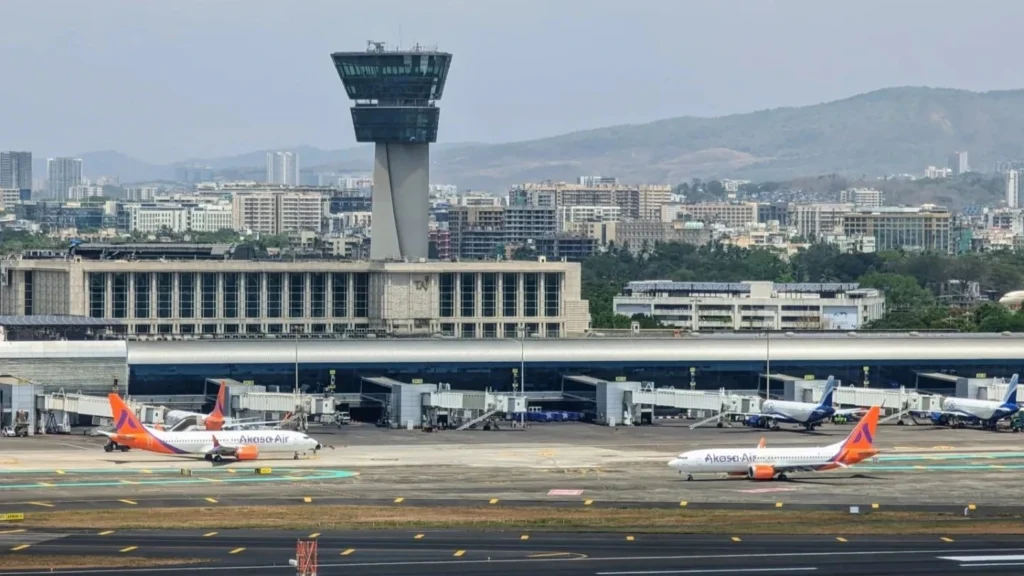 Photo: Utkarsh Thakkar (Vimanspotter)
Photo: Utkarsh Thakkar (Vimanspotter)10. Chhatrapati Shivaji Maharaj International Airport (BOM)
Mumbai’s main airport, Chhatrapati Shivaji Maharaj International Airport (BOM), served just under 50 million passengers in 2024, slightly below our range. But with new capacity expected and expanding traffic, BOM’s near-future growth means it’s included.
Air India and IndiGo are major operators, with Vistara, SpiceJet, and Akasa Air handling domestic and regional flights. Foreign connections are provided by Emirates, Qatar, British Airways, Lufthansa, Singapore Airlines, and Cathay Pacific.
Mumbai continues its expansion with plans for a second major airport by 2025, underscoring its growing importance.
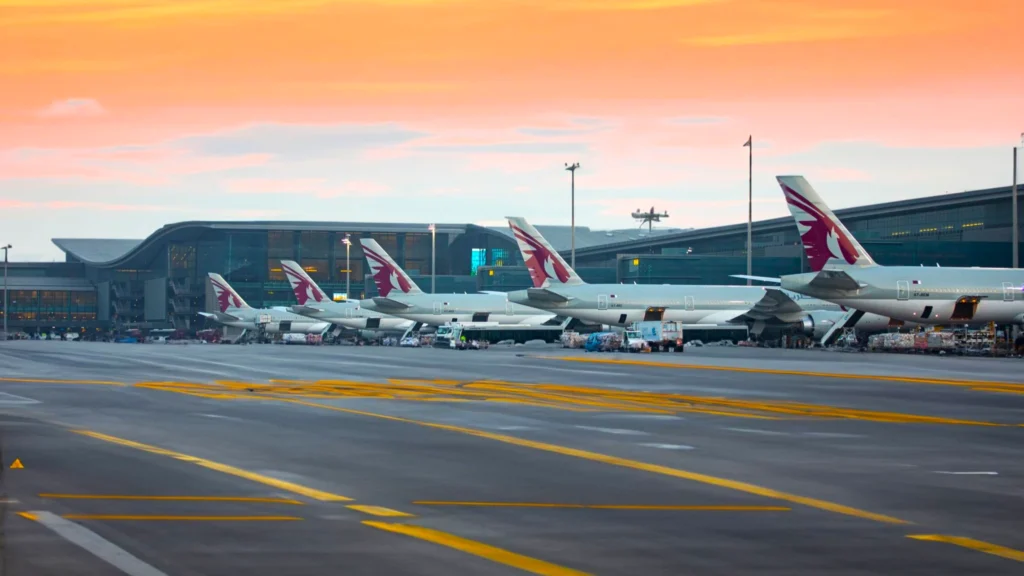 Photo: Hamad International Airport
Photo: Hamad International AirportAirline Hubs & Connectivity Overview
Each of these airports is defined by its resident airlines:
- DOH → Qatar Airways
- HKG → Cathay Pacific & Hong Kong Airlines
- CGK → Garuda, Lion Air
- FRA → Lufthansa & Star Alliance
- SEA → Alaska & Delta
- BKK → Thai Airways & Thai AirAsia
- SFO → United & international alliances
- KUL → Malaysia Airlines & AirAsia
- BCN → Iberia/Vueling & European LCCs
- BOM → IndiGo & Air India
This blend of flag carriers, low‑cost airlines, and global alliances shapes each airport’s traffic dynamics.
Bottom Line
These ten airports epitomize dynamic recovery and growth, each handling 50–60 million passengers in 2024.
With roofs now full again of thriving domestic, regional, and international lines, they represent the global air travel ecosystem’s resilience.
Each hub anchors major airlines, offering seamless connectivity that keeps the world moving.
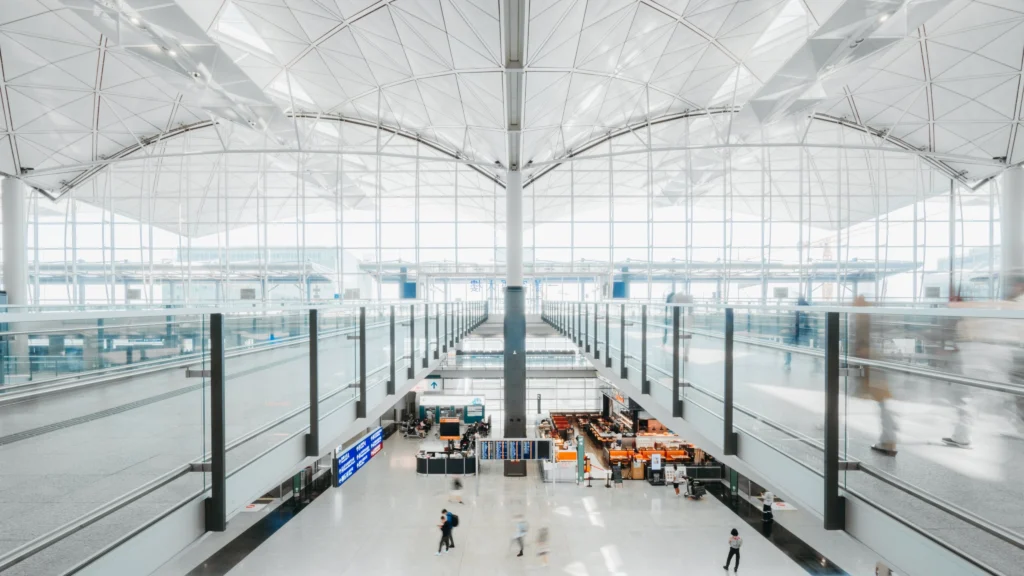 Photo: Hong Kong International Airport
Photo: Hong Kong International AirportFAQs on Best Airports in the World: 50-60 Million Pax
The airports that handled between 50 and 60 million passengers in 2024 include Hamad International (DOH), Hong Kong International (HKG), Soekarno–Hatta (CGK), Seattle–Tacoma (SEA), San Francisco International (SFO), Kuala Lumpur International (KUL), and Barcelona-El–El Prat (BCN). Suvarnabhumi (BKK) slightly exceeded 60 million, while Mumbai (BOM) was just below 50 million, but was included due to projected growth.
DOH: Qatar Airways
HKG: Cathay Pacific & Hong Kong Airlines
CGK: Garuda Indonesia & Lion Air
FRA: Lufthansa & Star Alliance
SEA: Alaska Airlines & Delta Air Lines
BKK: Thai Airways & Thai AirAsia
SFO: United Airlines & international carriers
KUL: Malaysia Airlines & AirAsia
BCN: Iberia, Vueling & European LCCs
BOM: IndiGo & Air India
Hong Kong International Airport (HKG) experienced the highest year-on-year growth, with a 34.3% increase in passenger traffic in 2024.
Mumbai’s airport (BOM) is included because of its strong projected growth and the anticipated expansion, with a second major airport expected by the end of 2025, positioning it for rapid scaling beyond the 50 million threshold.
Key factors included the post-pandemic recovery, revival of tourism, the presence of major airline hubs, expanding international networks, and rising local travel demand—especially in cities like Doha, Hong Kong, Bangkok, and Seattle.
Stay tuned with us. Further, follow us on social media for the latest updates.
Join us on Telegram Group for the Latest Aviation Updates. Subsequently, follow us on Google News.
Top 10 Best Airports in the World in 2025: 70+ Million Passengers
The post Top 10 Best Airports in the World in 2025: 50 to 60 Million Passengers appeared first on Aviation A2Z.









